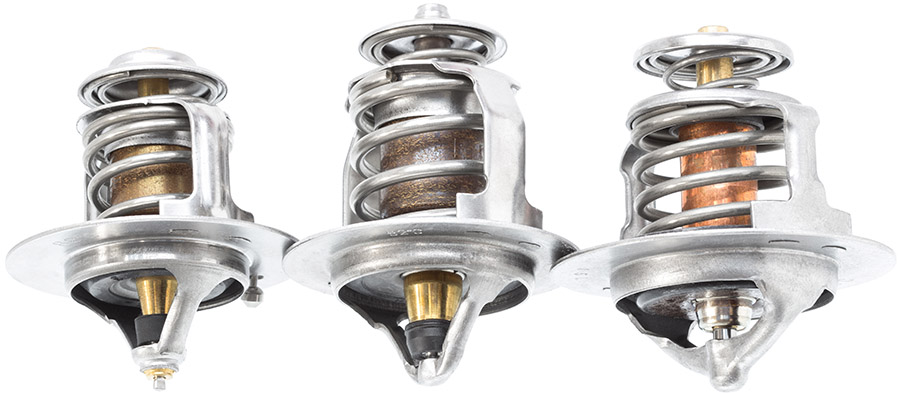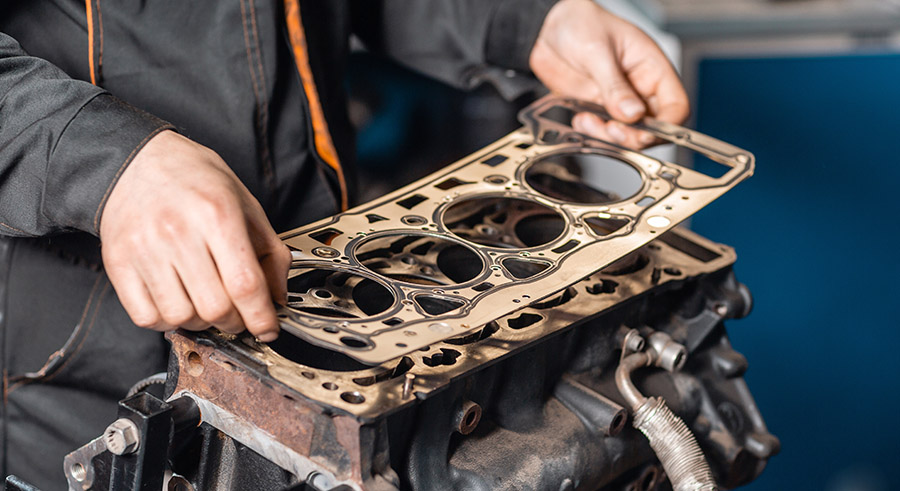Mercedes-Benz GLS engine overheating is a serious issue that can lead to significant damage if not addressed promptly. Several factors can contribute to engine overheating, and understanding these causes is crucial for both prevention and troubleshooting.

Engine overheating in Mercedes-Benz GLS is typically caused by a combination of factors, including insufficient coolant levels, coolant leaks from components like hoses or the radiator, a malfunctioning thermostat that fails to regulate coolant flow, a clogged radiator obstructing proper heat dissipation, faulty cooling fans not adequately cooling the radiator, and a worn or damaged water pump unable to circulate coolant effectively.
1. Low coolant level
One of the primary reasons for engine overheating in GLS is a low level of coolant or antifreeze in the cooling system. Coolant plays a critical role in regulating the engine’s temperature by dissipating heat. When the coolant level is low, there is not enough fluid to absorb and transfer heat away from the engine. This can result in rapid temperature spikes and overheating.

Regularly check and maintain the coolant level as part of your routine vehicle maintenance. Ensure that the coolant mixture is at the recommended ratio of water to coolant, as specified in your vehicle’s owner’s manual.
Coolant leak
Leaks in the cooling system can lead to a loss of coolant, which in turn causes the engine to overheat. Common areas for leaks include radiator hoses, the radiator itself, the water pump, and the heater core. Even a small leak can have a significant impact on the cooling system’s effectiveness.

Regularly inspect the cooling system for leaks and replace damaged or worn components promptly. Look for puddles or stains beneath your vehicle, as these may indicate a coolant leak.
2. Bad radiator fan
Electric cooling fans are responsible for drawing air through the radiator to help cool the coolant in GLS. If these fans fail to operate correctly, especially in stop-and-go traffic or at low speeds, it can result in engine overheating.

Check fan relay and fuse
Often, the radiator fan is controlled by an electrical relay. This relay acts as an electrical switch that activates the fan when needed. If the relay fails, it won’t send the necessary electrical signal to the fan, causing it to stay off when it should be cooling the engine.
You can test the relay by swapping it with a similar relay in the fuse box. If the radiator fan starts working after the swap, the relay was likely the issue.
Also inspect the fuse related to the radiator fan. If it’s blown, replace it with a fuse of the same rating.
3. Dirty radiator
A dirty radiator can be a cause of engine overheating. The primary function of the radiator in GLS is to dissipate heat from the coolant by allowing air to flow through its fins.

If the radiator becomes clogged with dirt, debris, or corrosion, it can restrict airflow and hinder the cooling process. This, in turn, leads to reduced heat dissipation, causing the engine temperature to rise.
Regular maintenance, such as cleaning and flushing the radiator to remove accumulated debris and deposits, is essential to ensure the radiator can effectively cool the coolant and prevent engine overheating.
4. Clogged radiator
A blocked radiator can also contribute to engine overheating in GLS. Over time, debris, dirt, and mineral deposits can accumulate in the radiator, hindering the flow of coolant. This reduced circulation means that the engine can’t effectively dissipate heat, leading to overheating. Regularly flushing and cleaning the radiator in your GLS can help prevent this issue.

Emergency Cooling Trick
A common trick to help temporarily cool an overheating engine is by turning on the heater on full blast in your GLS. When you activate the heater, it draws heat away from the engine’s cooling system and into the cabin of the car. This can help lower the engine’s temperature in the short term because the heater core acts as a secondary radiator.
However, it’s important to note that this is not a long-term solution or a substitute for addressing the underlying cause of the engine overheating. It’s a useful measure to prevent further overheating in an emergency situation, but you should still pull over, turn off the engine, and allow it to cool down properly. Once the engine has cooled down, you should diagnose and address the root cause of the overheating to prevent it from happening again.
5. Air in the cooling system
Air trapped in the cooling system can also lead to engine overheating in GLS. Air pockets or airlocks in the cooling system can disrupt the circulation of coolant, preventing it from effectively absorbing and dissipating heat. As a result, localized hot spots can develop within the engine, causing it to overheat.
Air can enter the cooling system during various maintenance procedures, such as coolant replacement or repairs. Proper bleeding or purging of air from the system is essential to prevent overheating.
6. Thermostat stuck closed
The thermostat is a vital component of the cooling system in Mercedes-Benz GLS. Its job is to regulate the flow of coolant through the engine. If the thermostat gets stuck in the closed position, it will restrict coolant flow through the radiator, causing the engine to overheat.

Conversely, if it gets stuck in the open position, the engine may never reach its optimal operating temperature, leading to poor fuel efficiency. Replacing a malfunctioning thermostat is relatively inexpensive and can prevent engine overheating.
7. Faulty water pump
A faulty water pump can also cause the engine to overheat in your Mercedes-Benz GLS. The water pump is a critical component of the engine’s cooling system, responsible for circulating coolant through the engine and the radiator. If the water pump fails or becomes worn, it can impede the proper circulation of coolant, leading to inadequate cooling and, ultimately, engine overheating.

Common issues with a faulty water pump include leaks, damaged impellers, or bearing failure, all of which can disrupt the cooling process. Therefore, maintaining a properly functioning water pump is essential for preventing engine overheating.
8. Low engine oil level
Low engine oil level in GLS can also contribute to engine overheating, although the direct relationship is not as obvious as some other causes. Engine oil plays a crucial role in lubricating various components within the engine, including the pistons, bearings, and other moving parts. When the engine is not adequately lubricated due to low oil levels, it can lead to increased friction and heat generation.

The heat generated by increased friction can contribute to higher overall engine temperatures in GLS. Additionally, low oil levels can lead to increased wear and tear on engine components, potentially causing them to malfunction or fail, which can result in overheating.
While low engine oil level alone might not be the primary cause of engine overheating in GLS, it can exacerbate the problem when combined with other issues like a malfunctioning cooling system or a clogged radiator. Therefore, maintaining the proper oil level and adhering to regular oil change intervals is crucial for overall engine health and preventing overheating.
Recommended video
9. Clogged catalytic converter
A clogged catalytic converter can also cause the engine to overheat in GLS, although it’s not a common cause and usually not the primary factor. The catalytic converter’s main role is to reduce harmful emissions by converting toxic gases like carbon monoxide and nitrogen oxides into less harmful substances. However, it can become clogged over time due to the buildup of unburned fuel, oil, or other contaminants.

When a catalytic converter becomes severely clogged, it can restrict the exhaust flow from the engine, which can increase back pressure in the exhaust system. This increased back pressure can lead to several problems, including elevated engine temperatures. The engine may have to work harder to push exhaust gases through the clogged converter, which can result in overheating.
If you suspect a clogged catalytic converter, you may also notice symptoms like reduced engine performance, poor fuel efficiency, and the illumination of the Check Engine Light on your vehicle’s dashboard. If you suspect a clogged catalytic converter, it’s essential to have it inspected and replaced if necessary to prevent further engine problems.
Recommended video
10. Blown head gasket
A blown head gasket is a severe and common cause of engine overheating in GLS. The head gasket is a crucial component that seals the gap between the engine block and the cylinder head, preventing the mixing of engine coolant, engine oil, and combustion gases. When a head gasket blows or fails, several problems can arise, leading to engine overheating.

Coolant Leakage
A blown head gasket in GLS can allow engine coolant to leak into the combustion chambers or into the engine’s oil passages. This can lead to a drop in coolant levels, causing inadequate cooling of the engine.
Combustion Gas Leakage
A blown head gasket in GLS can also permit combustion gases to escape into the cooling system, increasing pressure and disrupting coolant flow. This can lead to overheating and the potential for damage to the cooling system components.
Reduced Compression
A blown head gasket can cause a loss of compression in the affected cylinders, which can result in poor engine performance, misfires, and overheating as the engine struggles to operate efficiently.
Overheating
As the head gasket failure progresses in GLS, the engine’s ability to maintain a stable temperature is compromised. This can lead to severe overheating, which can cause further engine damage if not addressed promptly.
A blown head gasket is a serious issue that requires immediate attention. Repairing or replacing a head gasket in Mercedes-Benz GLS is a complex and labor-intensive process. Ignoring a blown head gasket can lead to catastrophic engine damage, so it’s essential to address this problem as soon as symptoms like overheating, coolant loss, or white smoke from the exhaust are noticed.
11. Broken serpentine belt
A broken serpentine belt can lead to engine overheating and various other issues in Mercedes-Benz GLS. The serpentine belt, also known as the drive belt, is responsible for driving multiple components in the engine, including the alternator, water pump, and air conditioning compressor. When the belt breaks or becomes damaged, these critical components can cease to function properly, leading to several problems, including overheating.

Water pump stops working
The water pump in GLS is responsible for circulating coolant throughout the engine to maintain proper operating temperatures. When the serpentine belt breaks, the water pump stops working, which can lead to inadequate coolant circulation and engine overheating.
Do not drive with a broken serpentine belt
If your serpentine belt breaks in GLS while driving, it’s essential to pull over safely and turn off the engine immediately to prevent further damage. Do not attempt to drive the vehicle without a functional serpentine belt.
12. Faulty temperature sensor
A faulty temperature sensor can be a contributing factor to engine overheating in your GLS. The temperature sensor, often referred to as the coolant temperature sensor or engine coolant temperature (ECT) sensor, is responsible for monitoring the engine’s temperature and sending this data to the engine control unit (ECU) or powertrain control module (PCM). The ECU uses this information to adjust fuel delivery and ignition timing to maintain the engine at the optimal operating temperature.

If the temperature sensor malfunctions or provides incorrect readings, it can lead to various problems, including engine overheating.
If you suspect a faulty temperature sensor is contributing to engine overheating, it’s essential to have it diagnosed and replaced. Proper diagnosis typically involves using diagnostic tools to check the sensor’s output and its correlation with actual engine temperature. Replacing a faulty temperature sensor is a relatively straightforward repair that can help ensure accurate temperature monitoring and prevent overheating issues.
Frequently Asked Questions
Is it safe to drive GLS with an overheated engine?
No, it is not safe to drive your GLS with an overheated engine. An overheated engine can lead to serious and potentially irreversible damage to your vehicle’s internal components.
How long does it take for a car to cool down after overheating?
The time it takes for the engine to cool down in GLS after overheating can vary depending on several factors, including the severity of the overheating and ambient temperature. In general, it can take anywhere from 30 minutes to a few hours for an overheated engine to cool down sufficiently to a safe operating temperature.
How can I cool my engine faster?
Although it may sound counterintuitive, turning on the heater to its maximum setting can help remove some heat from the engine. This is because the heater core in the cabin acts as a secondary radiator. While it may make the interior uncomfortable, it can help cool the engine.
Also, pop the hood of your vehicle to allow hot air to escape more easily. This will help the engine dissipate heat faster.
Why does my GLS overheat when I get on the highway?
Highway driving can put a greater load on the engine, which generates more heat. If the cooling system in your GLS has issues affecting its performance or efficiency, it can lead to overheating at highway speeds.
Is an engine ruined if it overheats?
An engine can be severely damaged if it overheats, but whether it’s completely ruined depends on the extent and duration of the overheating, as well as how quickly the issue is addressed.
What damage is caused by an overheated engine?
An overheated engine can result in a range of damage, including warped cylinder heads and blown head gaskets, which can lead to coolant and oil mixing and reduced engine performance.
Additionally, prolonged overheating can cause damage to piston rings, cylinder walls, and other internal engine components, affecting compression and combustion efficiency.
Severe overheating may even lead to engine block cracks or a completely seized engine, requiring extensive and costly repairs or engine replacement.
Furthermore, repeated overheating episodes can reduce the engine’s lifespan and overall reliability, emphasizing the critical importance of promptly addressing any overheating issues to prevent extensive damage.



